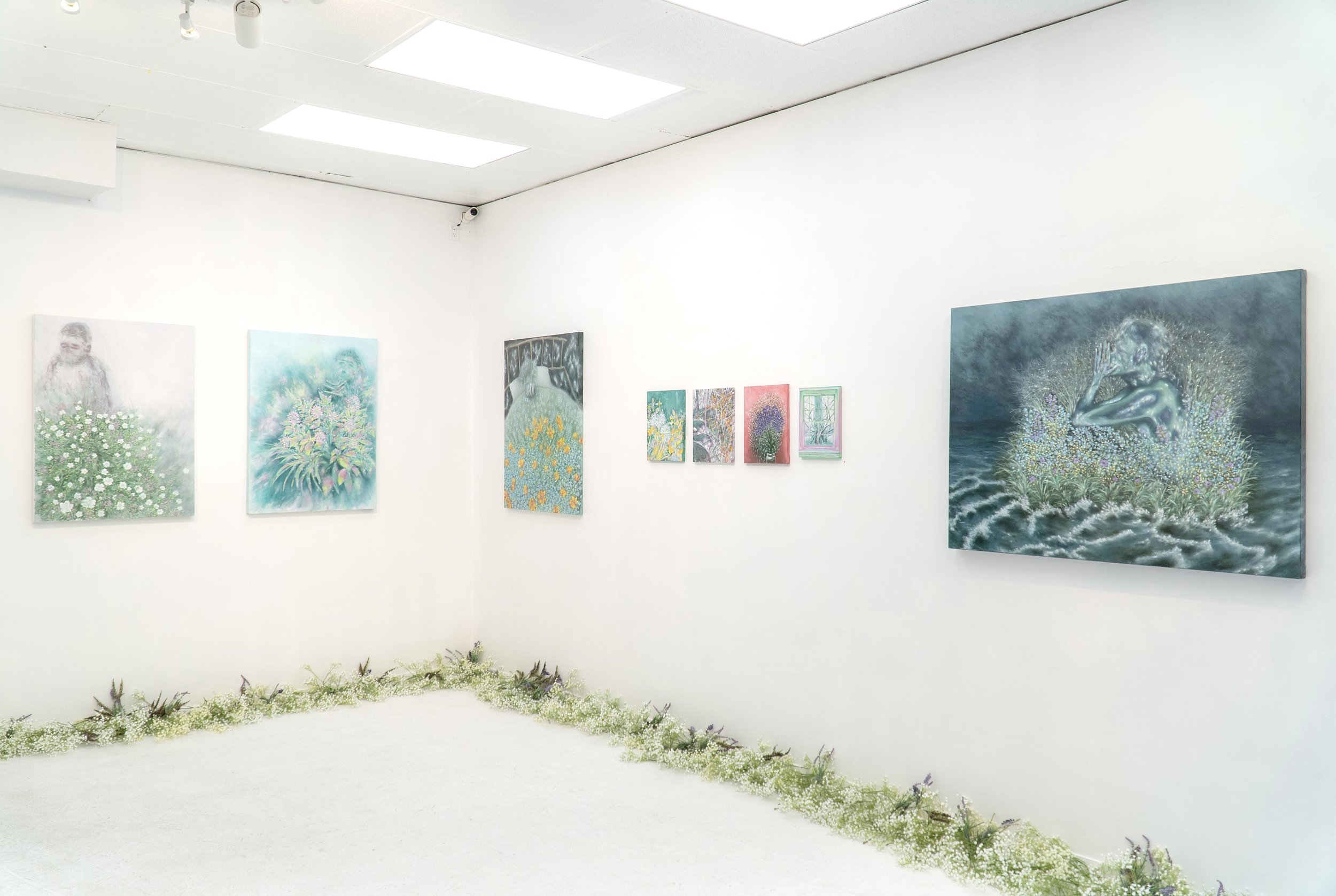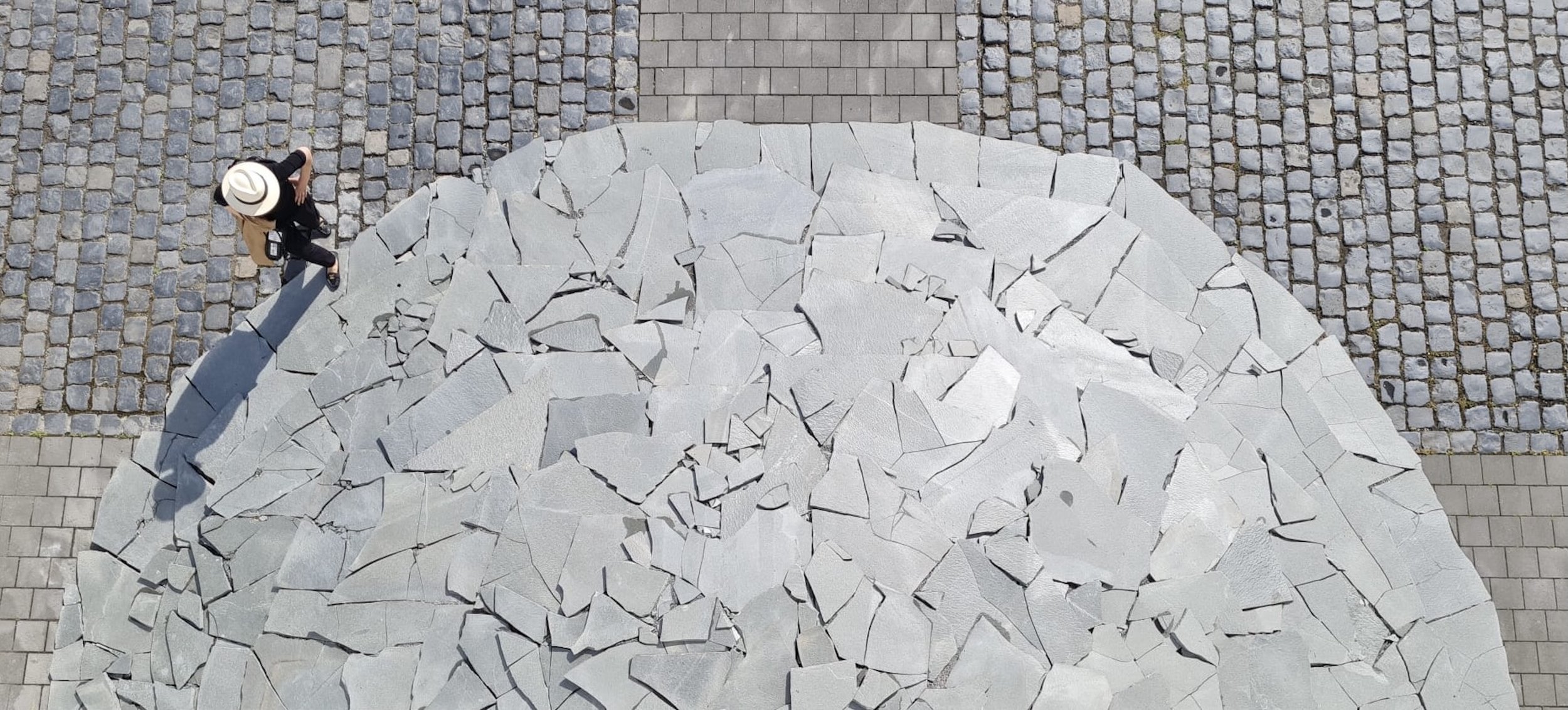Roberta Zertuche in Conversation with Founder of PPULI PROJECT Irene Gong
It has become evident that public art is more present than ever across the globe. Large-scale installations in deserts, cities, and unexpected places are drawing significant attention from the general public. With numerous site-specific projects and the Earth as the canvas, one of the most exciting initiatives in the US is the ambitious urban-focused project called PPULI PROJECT.
Established in 2024 by independent curator Irene Gong, PPULI PROJECT is an annual international curatorial organization that focuses on site-specific installations and public art projects in urban contexts worldwide. The term "PPULI" derives from the Korean word for "root," symbolizing both plant roots and the foundational elements of creation. Since its recent inception, the organization has been launching a traveling public art exhibition across four countries in major cities starting in 2025, with more site-specific installation projects planned for the coming years.
MADE IN BED invited Irene for an exclusive conversation, during which we explored her project and discussed the development of public art in the New York art scene and internationally.
Irene Gong, 2022. Photo by Ji Young Lee. Courtesy of PPULI PROJECT.
Roberta Zertuche: Hi Irene! Thank you very much for taking the time to speak with me and share your insights and experiences with MADE IN BED magazine. Let me begin by asking how you became interested in art and then decided to pursue a career in the art sector.
Irene Gong: Hi Roberta, thank you for inviting me to this interview. I initially studied Hotel & Tourism Management at New York University and thought I would continue on that path. I love food, wine, art, and travel, so it seemed like a perfect fit for me. However, when the pandemic hit, I had to return to Korea and faced an uncertain future.
During my time in Korea, I enjoyed spending quality moments with my beloved family and friends. Since I had left Korea in 2012, this was the first time I was staying longer than my usual summer and winter vacations. I traveled to Jeju Island, one of my favorite spots in Korea, and spent a month there alone, finding great joy in the experience. It was then that I decided to explore interests I had always been passionate about but hadn't pursued due to constraints. My first exploration was into wine, so I enrolled in a wine academy in Seoul. I found it fulfilling to learn about wine's regions, types, processes, and how to distinguish labels.
After delving into wine, I sought an opportunity to learn about art. I found a place at Gana Atelier, which offered occasional painting lessons from renowned Korean contemporary artists. After attending weekly for a month, I became enamored with the new aspects of painting and the art market that I was learning from the perspective of living artists. My beloved mentor, Sara Lee, who is still an important figure in my life, allowed me to visit her studio once a week for about a year and a half before I returned to New York.
RZ: Great! It’s interesting to hear that you got your firsthand exposure to the art market through artist residencies and learned to paint from a Korean contemporary artist. How did you find yourself studying at Sotheby’s Institute of Art in New York, and what did you pursue after graduation?
IG: During my time learning painting at the artist residency, I wanted to challenge myself and see if I truly wanted to delve into contemporary art. I decided to open a solo exhibition to explore this interest further. With many canvases from my painting lessons and a growing sense of what I wanted to do next, it felt like the right moment to make a change. I wanted to experience the full process, from creating art to curating a show.With a lot of support, I secured a gallery space in a traditional village with Korean architecture in Seoul. I handled the logistics, promotions, and curation myself, and ultimately opened my first solo exhibition, titled Nature & Tradition.
After a successful show, I realized that contemporary art was something I truly wanted to learn before I missed the opportunity and regretted it. COVID-19 was challenging, but it provided a significant learning curve and helped me discover who I am. After returning to New York, I studied at Sotheby’s Institute of Art and worked at Gladstone Gallery, OPENART Advisory, The Armory Show, Gallery Kendra Jayne Patrick, and Christie’s before becoming an independent curator.
Kimin Kim, No Leaf Will Be Shaken, 2024,. Photo Courtesy: Irene Gong.
RZ: It seems like you have experienced a diverse range of the art market. How did you decide to transition to being an independent curator?
IG: I loved working at all of the places I’ve mentioned! I was truly impressed by the intricacies of the art world. I especially enjoyed working at Christie’s auction house because I thrive in a fast-paced environment and had the opportunity to see museum-quality pieces daily. Over time, I also wanted to work more closely with artists. With my previous experiences in Korea, I wanted to explore curating exhibitions in New York, focusing on other artists’ works. I enjoy the process of direct interaction with artists and wanted to enhance my curatorial skills. Additionally, I’ve been particularly interested in showcasing Korean contemporary artists, whether for solo exhibitions or debut shows in the US or elsewhere.
RZ: Amazing. What exhibitions have you held in New York since then? How was the process?
IG: While I was still working full-time at Christie’s, I spent my weekends looking for venues in Manhattan that showcased Korean artists to explore opportunities for my own projects as an independent curator. I discovered Space776 Gallery on the Lower East Side and reached out to them with proposals. I was introduced to the two artists I exhibited, Kimin Kim and Kejoo Park, through friends in the art world.
For both artists, I felt a heightened sense of responsibility because I was curating their debut shows in New York and the US. Kimin Kim had just graduated from RISD, and Kejoo Park was a long-time landscape architect and visual artist based in Frankfurt, Germany. My focus was on presenting their works in the best possible way and finding creative methods to engage viewers both visually and emotionally.
For Kim’s solo exhibition, No Leaf Will Be Shaken, I had several meetings with him to discuss his favorite novels, poetry, and philosophy that relate to his artistic themes, which helped me come up with the exhibition title. During the installation, I sourced 1,000 stems of flowers that Kim loves, which were incorporated into his canvas paintings.
Kejoo Park’s work integrates Western Romanticism with Eastern Taoism and Buddhism, along with poetry, philosophy, and classical music. To immerse the audience in her artistic practices and motivations, I organized an artist talk featuring guest speakers Linda Lauro Lazin and Stephen Hanson. We began by reading a passage from Hyperion by Friedrich Hölderlin, which encapsulates Park’s practice. Later, I invited Gregory Singer, founder of Manhattan Symphonie, to perform pieces by Gustav Mahler and Johann Sebastian Bach—music that has deeply inspired Park during her studio time in Germany. Gregory also played his own composition as a finale. The audience was deeply moved by Park’s journey and the live classical music, while I felt a profound sense of accomplishment in helping these artists make their mark in the New York art scene.
(Left) Stephen Hanson, (Middle) Kejoo Park, (Right) Linda Lauro-Lazin. Artist Talk at Space776 Gallery in 2024. Pjoto Courtesy: Irene Gong.
RZ: That sounds like a perfect debut stage for emerging artists to showcase their work to the public for the first time. Aside from curating shows at the gallery, how did you come up with the idea to establish a public art project-focused company, PPULI PROJECT?
IG: PPULI PROJECT is not directly related to my passion for presenting Korean artists. It’s not tied specifically to my nationality or interest in Korean art. However, the name "PPULI" means "root" in Korean, which carries a dual meaning. In Korean, "PPULI" refers to plant roots as well as the foundation or basis of elements. I like the term "root" because it symbolizes the "core," and I envision the organization growing like a sturdy tree thriving in the wild.
While studying at Sotheby’s Institute of Art, I became deeply interested in participatory art, where the audience's involvement is essential to completing the artwork. I was captivated by this concept because it involves large-scale installations where people can engage with and experience the art and the messages artists aim to convey. I also appreciate how the process, from ideation to completion, requires collaboration across various fields. Additionally, the site-specific nature of art creates a unique experience, as the artwork is adapted to and can only be viewed in a particular location.
This is why I wanted to combine my interest in public art projects with my love of nature. I particularly enjoyed walking on the High Line, where large-scale artworks are placed in the public realm. It struck me that if art enhances our lives, it should be accessible to the public and inclusive to a broad audience. Since I love both nature and art, I wanted to integrate these elements into my daily life in an urban setting, making them a part of my surroundings without the need to travel far to experience them.
Kejoo Park, The Earth Project, 2022. Photo Courtesy: Kejoo Park.
RZ: I agree with you! I believe art should be more accessible and approachable in public spaces. I regularly pass by the Avenue of the Americas and see large artworks installed in front of corporate buildings and on the street. I love how they’re exposed in high-traffic areas within the city. What projects do you have in mind with PPULI PROJECT?
IG: The organization operates on an annual basis, allowing us a longer period to prepare large-scale projects. It also gives our team the opportunity to work full-time elsewhere and participate in exciting, eventful projects around the world once a year. In 2025, I am scheduled to plan a traveling exhibition with Kejoo Park for her second project, following her first public art installation, The Earth Project 2. This project will be exciting as it involves curators, fundraisers, construction companies, government agencies, and local communities from four different countries. We also aim to emphasize educational and sustainable concepts by including performances and talks with local environmental organizations to explore contemporary art from various expert perspectives.
Most notably, a single public art installation will be traveling around the world—can you imagine? I believe this nomadic exhibition offers international and impactful experiences for the audience to engage with art.
Currently, we are finalizing New York as our final project site. I am truly excited to share my passion for public art with a wider audience. Over time, I aim to invite international artists to join the project and convey their messages in urban environments.
RZ: The project site is truly limitless as I hear about your upcoming projects from the PPULI PROJECT! Thank you, Irene, for sharing your passion. The project seems collaborative and immersive, aligning with your company’s mission.
IG: It really is! I’m also honored to work with Kejoo Park once again; she’s already teaching me so much. I plan to learn from the artists who are collaborating as time goes on. I believe this is the essence of working in the contemporary art world—working side by side and learning new things every day.
Many thanks to Irene Gong on behalf of MADE IN BED for taking the time to have the conversation and providing us with valuable insights into her curatorial focus on Korean art and PPULI PROJECT on public art projects within the global context.
Roberta Zertuche
Contributing Writer, MADE IN BED





